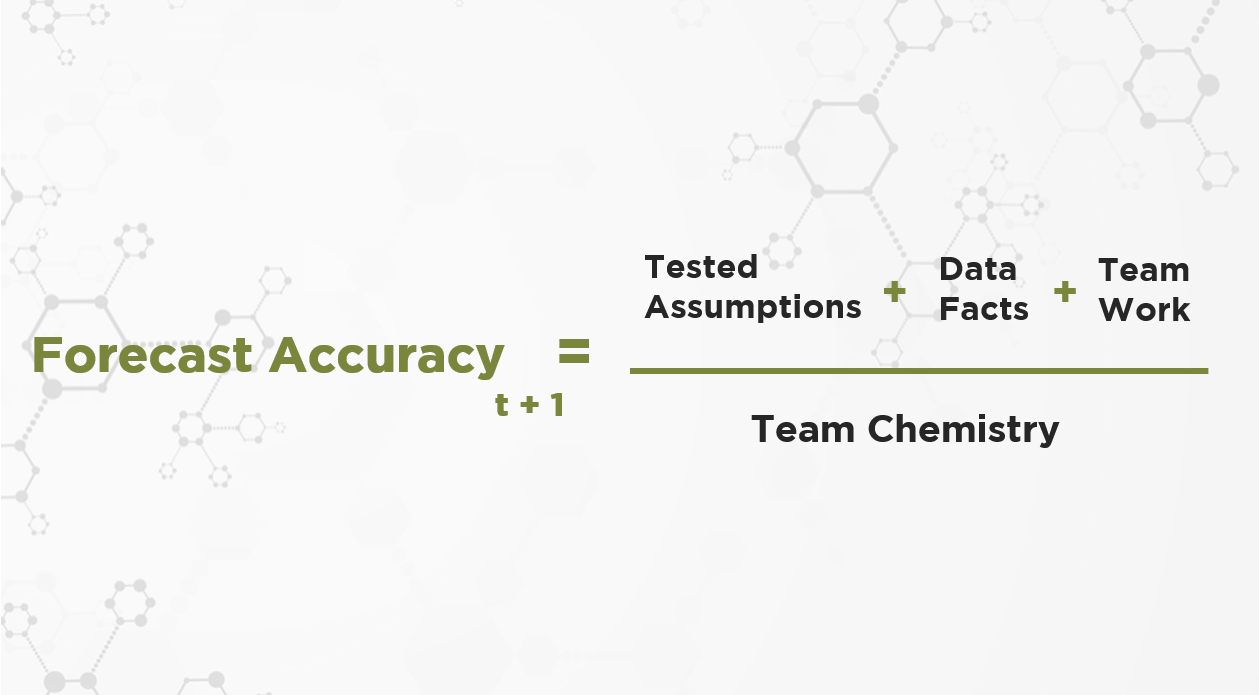The week eleven memo that was sent to our CEOs across the country on Sunday, May 17:
The United States is beginning to rebalance its mixture of protection vs. recovery activities. Yet summer time and sales have not historically been the dynamic duo--in the US or around the world. We keep hearing that many companies are going to fizzle and fail. Every day I think about who it could be and how to prevent this dire prediction happening to you. Accurate forecasts are the first requirement.
All stakeholders, from an individual contributor to the Board of Directors, seek out forecast accuracy. Accuracy prevents bad surprises and capitalizes on available opportunity. Accuracy builds confidence. Accuracy provides certainty. Correct forecasts, good or bad, give people belief.
Forecasting is chemistry, not alchemy. It is led by the CFO, who tries to be as scientific as possible in formulating the projections. There is (hopefully) rigorous testing of team assumptions with comparisons to previous actuals, current KPIs, and the ongoing track record of executive management verbal commitments. There are scenario reviews and often a final hedge before Board submittal.
Your focus the last ten weeks has been actions on expenses, retention and cash runway. You and your board are scrutinizing a rolling, 13-week cash management tool, accounts receivable results, and revenue projections, even for those with upside. It has not been fun, but it is an essential service.
After the May’20 books are closed there will be three months of data available for you. I recommend dedicating numerous hours to studying assumptions done during the March madness and comparing those to results now. Analyze seller productivity and price discounts. Study, in depth, across all players--including executive management Sales, Marketing, Product, Customer Service--the following:
- Sales Cycle Length: Require a fact-based, chronological template of SCL for each new add and retained customer. Map the time interval for every new purchase order from demo to deployment, not just the typical murky start time of a Lead to closed deal. For B2C this map includes the time and frequency on your website of a subscriber to payment.
- - Value Demonstrability: Test that the demo delivers the “ahh hah” moment within two minutes of the sales call while WFH is still the main medium. Do not take even five minutes to prove a differentiator on a demo.
- - Gross Recurring Margin: Your antidote for an unbounded timeline of suppressed demand and dire predictions of company failure is GRM. Cash runway is an easy calculation based on cash on hand to expenses: burn rate. But your installed base is going to deliver more growth and surely more stability than new adds. You and your teams have done the upstream work to fight for the installed base over the last two months.
Disruptive companies with 150 customers or 1.5M potential subscribers are less prone to market shifts; SaaS is notoriously more stable than other models. But we are in the pandemic era.
The best forecasts are a result of a culture and process, not superior intelligence or frankly, even experience. Therefore:
- Ensure you have sufficient outside views versus inside views on customer demand and satisfaction. You should have implemented more “Market Voice” in your scenarios by now.
- Refrain from running immediately to any good evidence or running away from a few bad data points.
- Update your beliefs in the business and your leadership every month.
- Ask more precise questions versus impose certainty when there is none.
Finally, there is another, even more deterministic chemistry in your company that affects forecasting. It is the chemistry that governs the emotional and psychological interaction among two, ten, or all employees of the organization. I have seen often bad chemistry between Sales and Finance, Sales and Marketing, Marketing and Product, and an insufficient respect for customer service about the market voice. Bad team chemistry results in missed forecasts.
The CEO creates the chemistry of your company. Cohesion among teams is important to produce more precise projections. One of your most important duties now is to go deep on the reasons behind the forecasting, strike the balance between over-confidence and under-confidence, and ensure the next six months of assumptions are exposed to a lot of sunshine.
Enjoy the holiday. We will resume our memo on Sunday, May 31.
Good things await in your business. Onward.
Sincerely,
Edison Partners

